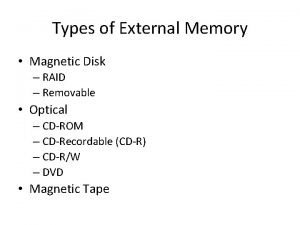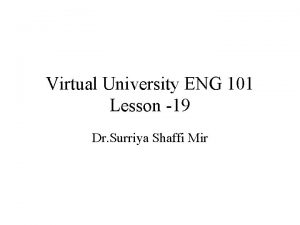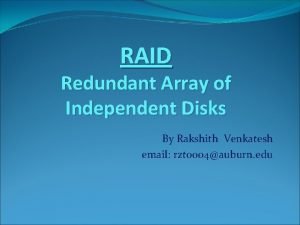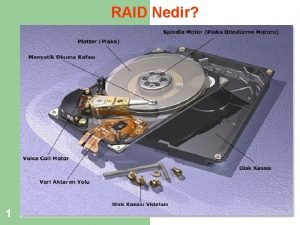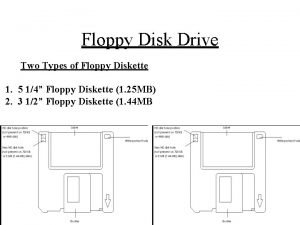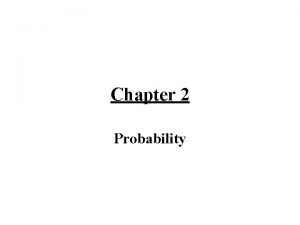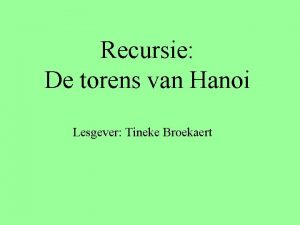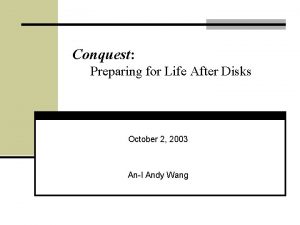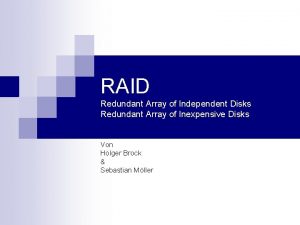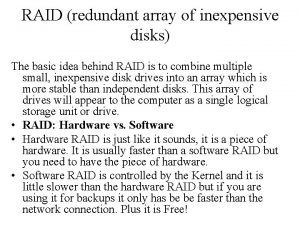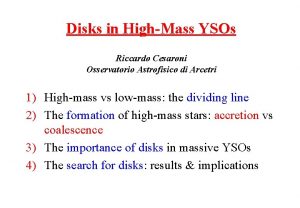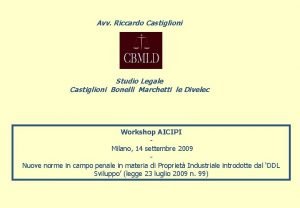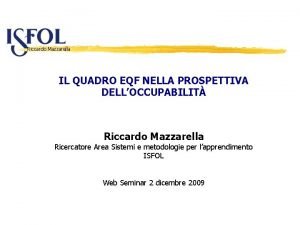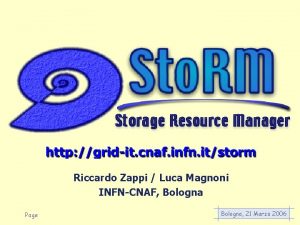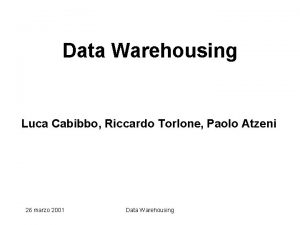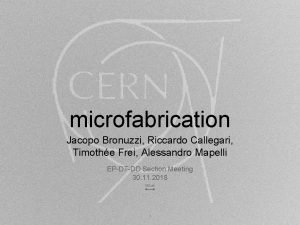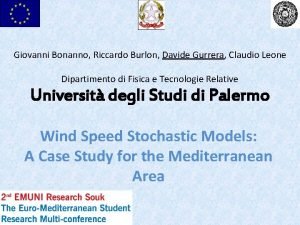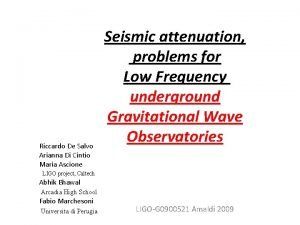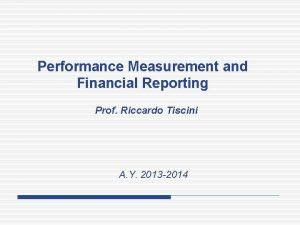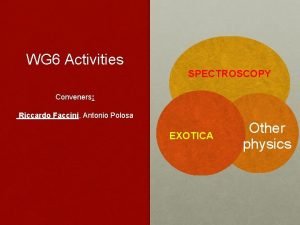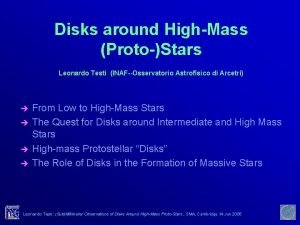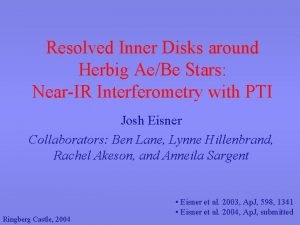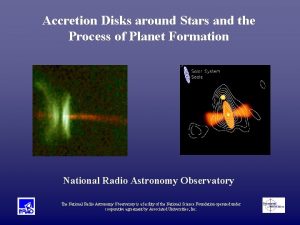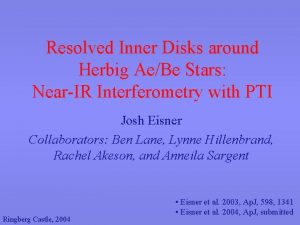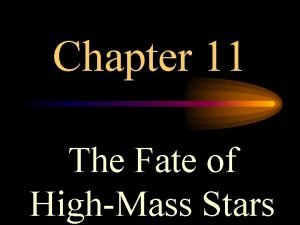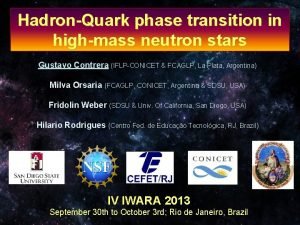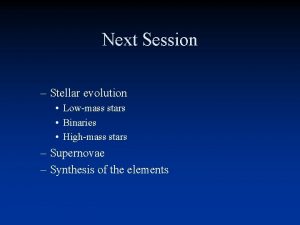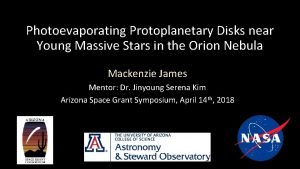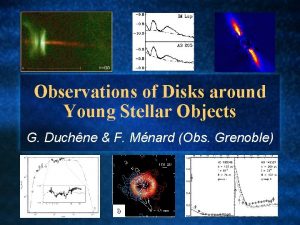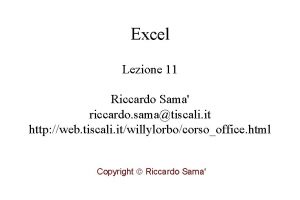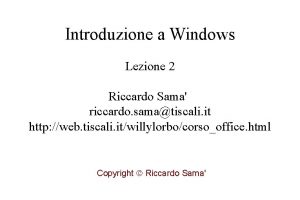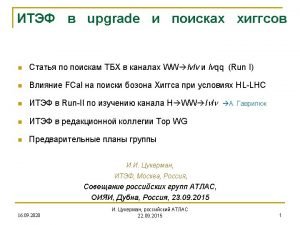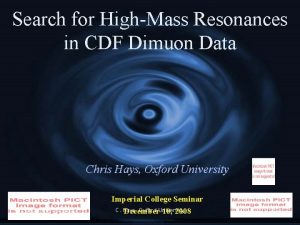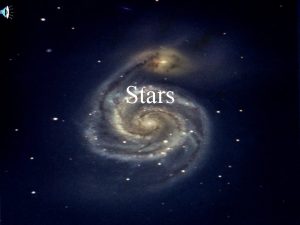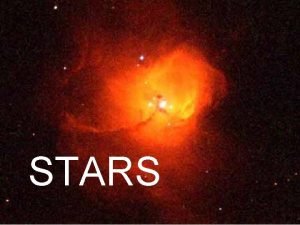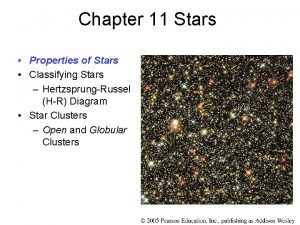Search for Disks around Young HighMass Stars Riccardo










![NGC 7538 IRS 1 N rel. Dec. [mas] PV plot along disk Pestalozzi et NGC 7538 IRS 1 N rel. Dec. [mas] PV plot along disk Pestalozzi et](https://slidetodoc.com/presentation_image/d5c49d1cc16afc8d6929151919561d93/image-11.jpg)
































- Slides: 43

Search for Disks around Young High-Mass Stars Riccardo Cesaroni INAF-Osservatorio Astrofisico di Arcetri 1) 2) 3) 4) Are disks predicted? Theories of HM SF Are disks observed? Search methods Observational evidence disks VS toroids Open questions and the future: ALMA, etc.

Existence of disks: Theory Disks are natural outcome of infall + angular momentum conservation, however: • B field magnetic braking, pseudo disks? • Ionization by OB stars photoevaporation? • Tidal interaction with cluster truncation? • Merging of low-mass stars destruction? Disks in OB protostars might not exist!

Good news: all theories predict circumstellar disks! Different models of high-mass star formation (core accretion, competitive accretion, …), but all predict circumstellar disks of ~100 -1000 AU See e. g. Bonnell 2005, Krumholz et al. 2007, Keto 2007, Kuiper et al. 2010 stars up to 137 MO through disk accretion

1 pc clump collapse competitive accretion Bonnell (2005)

time Zoom in core accretion in 0. 2 pc clump Krumholz et al. (2007) disk

density & velocity of gas around O 9 star (Keto 2007) ionized gas molecular gas 50 AU

Bad news: all theories predict circumstellar disks! Disks existence not sufficient to choose SF theory Disks may keep memory of formation process disks properties needed to discriminate between SF models < 100 AU resolution necessary, i. e. < 0. 1” ALMA, EVLA, e. MERLIN, VLBI, VLTI, …

The search for disks Many searches in the last decade need targets & tools Selection criteria for targets: • Bolometric (IRAS) luminosity > several 103 LO high-mass (proto)star • Association with outflow likely disk? • Presence of massive (> 10 MO), compact (< 0. 1 pc) molecular core deeply embedded (young) high-mass object • In some cases maser and/or UCHII OB stars

Tools adopted: • Thermal lines of rare (low-abundance) molecules trace highdensity, high-temperature gas in disk • H 2 O, CH 3 OH, Si. O maser lines mas resolution • (sub)mm continuum disk mass • IR continuum/lines disk emission and absorption • cm continuum and RRL ionised accretion flow Diagnostic: • Flattened (sub)mm core perpendicular to jet/outflow • Velocity gradient perpendicular to associated outflow • Peculiar (Keplerian) pattern in position-velocity plot • Dark silouhette in near-IR against bright background • Elongated emission in the mid-IR perpendicular to bipolar reflection nebula

Cep. A HW 2 disk Jimenez-Serra et al. (2007, 2009) PV plot along disk 1000 AU SO 2 Keplerian rotation about 18 MO star 600 AU thermal jet B field (23 m. G) CH 3 OH masers Vlemmings et al. (2010)
![NGC 7538 IRS 1 N rel Dec mas PV plot along disk Pestalozzi et NGC 7538 IRS 1 N rel. Dec. [mas] PV plot along disk Pestalozzi et](https://slidetodoc.com/presentation_image/d5c49d1cc16afc8d6929151919561d93/image-11.jpg)
NGC 7538 IRS 1 N rel. Dec. [mas] PV plot along disk Pestalozzi et al. (2004, 2009) model of Keplerian disk around 31 MO star CH 3 OH maser disk plane

M 17 Nuerberger et al. (2007) Chini et al. (2004) 2. 2 µm continuum disk H 2 jet 2 µm lines

J 23056+6016 Quanz et al. (2010) 4. 5µm emission disk H K’ bipolar nebula 12 CO blue outflow lobe red & blue C 18 O disk

Major problems: • Velocity gradient may be expansion instead of rotation • Outflow multiplicity and/or precession • Masers sample only few lines of sight • (sub)mm & IR continuum: no kinematical info • IR lines: so far limited spectral resolution Possible solutions: • High angular & spectral resolution accurate PV plots Keplerian rotation (close enough to star) • Maser proper motions 3 D velocity Combine as many tools as possible!

IRAS 20126+4104 Cesaroni et al. Hofner et al. Sridharan et al. Moscadelli et al. (2010) Keplerian rotation+infall: M*=10 MO Image: 2µm cont. --- OH maser H 2 O masers disk+jet 1000 AU jet 200 AU CH 3 OH H 2 O

Distance measurement to IRAS 20126+4104 with H 2 O maser parallax (Moscadelli et al. 2010) d = 1. 64± 0. 05 kpc

Observational results • Evidence for rotation/flattening in ~42 molecular cores: ~26 disks Keplerian rotation in ~10 of these ~16 rotating toroids velocity gradient perpendicular to outflow/jet, but not Keplerian

W 33 A CO v=2 -0 PV plots of candidate Keplerian disks in high-mass stars NGC 7538 S M 17 13 CO IRAS 23151 CH 3 OH Cep. AHW 2 IRAS 18566 DCN C 17 O NGC 7538 AFGL 5142 CH 3 OH NH 3(1, 1) IRAS 20126 AFGL 490 1” 0. 5” 0 -0. 5”

Steinecker+ 2006 IR detected disks model 2. 2µm VLT Nielbock+ 2007 M 17 UC 1 disk M 17 disk Kraus+ 2010 J 23056 Sridharan+ 2005 2. 2µm VLT model AFGL 2591 HD 200775 19µm Subaru disk Quanz+ 2010 2. 2µm Subaru disk Okamoto+ 2009 IRAS 20126 Kraus+ 2010 model disk 2. 2µm UKIRT 2. 2µm VLTI 2. 1µm speckle IRAS 13481

Velocity fields of rotating toroids G 24 A 1 G 327 G 24 A 2 G 305 C G 31. 41 CH 3 CN G 351 G 10. 62 NH 3 CH 3 CN G 19. 61 G 28. 20 NH 3 CH 3 CN

Disks Toroids • M < a few 10 MO • R ~ 1000 AU • L ~ 104 LO B (proto)stars • large tacc/trot equilibrium, circumstellar structures • M > 100 MO • R ~ 10000 AU • L > 105 LO O (proto)stars • small tacc/trot non-equilibrium, circumcluster structures disks Beltran et al. (2010) toroids

Open questions • When do disks appear? 1 disk/toroid in IR-dark cloud • Role of magnetic field? 2 toroids with B parallel to rotation axis B may play crucial role • Why no (Keplerian) disks seen in O stars? Ø Ionized by OB stars? Unlikely: too slow and rotation in ionized gas detected in G 10. 62 (Keto & Wood 2005) Ø Truncated by tidal interactions in cluster? Maybe, but numerical simulations needed Ø Too far? ALMA and EVLA should tell us! Ø Too deeply embedded in toroids? Optically thin (low abundance i. e. high density) tracers needed, but line forest may fool even ALMA! VLBI of masers may help

IRDC 18223 -3 Fallscheer et al. (2009) disk-model small-scale velocity field disk model large-scale bipolar outflow CH 3 OH 5000 AU 0. 2 pc

Open questions • When do disks appear? 1 disk/toroid in IR-dark cloud • Role of magnetic field? 2 toroids with B parallel to rotation axis B may play crucial role • Why no (Keplerian) disks seen in O stars? Ø Ionized by OB stars? Unlikely: too slow and rotation in ionized gas detected in G 10. 62 (Keto & Wood 2005) Ø Truncated by tidal interactions in cluster? Maybe, but numerical simulations needed Ø Too far? ALMA and EVLA should tell us! Ø Too deeply embedded in toroids? Optically thin (low abundance i. e. high density) tracers needed, but line forest may fool even ALMA! VLBI of masers may help

Keto & Klaassen (2008) Cesaroni et al. in prep. G 31. 41+0. 31 Girart et al. (2009) W 51 e 2 Tang et al. (2009)

Open questions • When do disks appear? 1 disk/toroid in IR-dark cloud • Role of magnetic field? 2 toroids with B parallel to rotation axis B may play crucial role • Why no (Keplerian) disks seen in O stars? Ø Ionized by OB stars? Unlikely: too slow and rotation in ionized gas detected in G 10. 62 (Keto & Wood 2005) Ø Truncated by tidal interactions in cluster? Maybe, but numerical simulations needed Ø Too far? ALMA and EVLA should tell us! Ø Too deeply embedded in toroids? Optically thin (low abundance i. e. high density) tracers needed, but line forest may fool even ALMA! VLBI of masers may help

Cesaroni et al. (2007) photo-evaporation rotational period tidal destruction

Open questions • When do disks appear? 1 disk/toroid in IR-dark cloud • Role of magnetic field? 2 toroids with B parallel to rotation axis B may play crucial role • Why no (Keplerian) disks seen in O stars? Ø Ionized by OB stars? Unlikely: too slow and rotation in ionized gas detected in G 10. 62 (Keto & Wood 2005) Ø Truncated by tidal interactions in cluster? Maybe, but numerical simulations needed Ø Too far? ALMA and EVLA should tell us! Ø Too deeply embedded in toroids? Optically thin (low abundance i. e. high density) tracers needed, but line forest may fool even ALMA! VLBI of masers may help

Assumptions: circumstellar disks HPBW = Rdisk/4 FWHMline = Vrot(Rdisk) obs. freq. = 230 GHz ge -o ° 35 i= TB > 20 K ed same <Ncol> in all disks n Mdisk Mstar 5 hours ON-source spec. res. = 0. 2 km/s S/N = 20 Keplerian

Assumptions: HPBW = Rdisk/4 FWHMline = Vrot(Rdisk) 5 hours ON-source spec. res. = 0. 2 km/s S/N = 20 ge -o rs sta 35 ° no obs. freq. = 230 GHz i= TB > 20 K ed same <Ncol> in all disks n Mdisk Mstar

Simulations of disks around 8 MO star Krumholz et al. (2007) NH 3 with EVLA CH 3 CN(12 -11) with ALMA cont. + line cont. subtr.

Open questions • When do disks appear? 1 disk/toroid in IR-dark cloud • Role of magnetic field? 2 toroids with B parallel to rotation axis B may play crucial role • Why no (Keplerian) disks seen in O stars? Ø Ionized by OB stars? Unlikely: too slow and rotation in ionized gas detected in G 10. 62 (Keto & Wood 2005) Ø Truncated by tidal interactions in cluster? Maybe, but numerical simulations needed Ø Too far? ALMA and EVLA should tell us! Ø Too deeply embedded in toroids? Optically thin (low abundance i. e. high density) tracers needed, but line forest may fool even ALMA! VLBI of masers may help

rotating toroid CH 3 CN deeply embedded disk? CH 3 OH masers 1. 3 cm cont. Furuya et al. (2008) Sanna et al. (2010)


IRAS 18566+0408 Araya et al. (2007) (7 mm cont. , dust) Si. O jet maser (cm cont. , free-free) Zhang et al. (2007)

DR 21(OH)N Harvey-Smith et al. (2008) Linear distribution of OH maser spots Keplerian pattern in PV plot

Cep. A HW 2 disk Jimenez-Serra et al. (2007, 2009) PV plot along disk SO 2 Keplerian rotation about 18 MO star thermal jet H 2 O masers PV plot Torrelles et al. (1996)

IRAS 20126+4104 Cesaroni et al. Hofner et al. Keplerian Moscadelli etrotation: al. M*=7 MO Moscadelli et al. (2005)

What to search for? Theorist’s definition: Disk = long-lived, flat, rotating structure in centrifugal equilibrium Observer’s definition: Disk = elongated structure with velocity gradient perpendicular to outflow axis outflow core disk outflow

Cep. A HW 2 disk Jimenez-Serra et al. (2007, 2009) SO 2 PV plot along disk Keplerian rotation about 18 MO star thermal jet

Existence of disks: Observations Naïve paradigm: infall disk + outflow Outflows are easy to observe i. Outflows equally common from solar-type to O-type stars (Beuther et al. 2002, Wu et al. 2004, Sepulcre et al. 2009) ii. Outflow parameters (e. g. momentum rate) vary smoothly from low- to high-mass stars iii. Disks do exist in low-mass stars i+ii+iii Disks should exist also in high-mass stars! This is no proof, but very encouraging…

Observational results • Evidence for rotation in ~42 molecular cores: ~26 disks Keplerian rotation in ~10 of these ~16 rotating toroids not Keplerian • ~6 disks seen in the IR (absorption/emission) • some (>2) studied in maser lines absolute proper motions 3 D velocities (+distance)

Observational results • Evidence for rotation in ~42 molecular cores: ~26 disks Keplerian rotation in ~10 of these ~16 rotating toroids not Keplerian • ~6 disks seen in the IR (absorption/emission) • some (>2) studied in maser lines absolute proper motions 3 D velocities (+distance)
 There are millions of stars in the space
There are millions of stars in the space Example of what goes around comes around
Example of what goes around comes around Martin luther king of hinduism
Martin luther king of hinduism Types of magnetic disks
Types of magnetic disks Disks and tapes can be stored ------- a library. eng101
Disks and tapes can be stored ------- a library. eng101 Computer parts labeling
Computer parts labeling Redundancy array of independent disk
Redundancy array of independent disk Unraid nedir
Unraid nedir Types of floppy diskette
Types of floppy diskette Probability learning objectives
Probability learning objectives Tower of hanoi 4 disks
Tower of hanoi 4 disks Conquest data disks
Conquest data disks Holger brock
Holger brock Drum printer definition
Drum printer definition Aka.ms.sqlcapacity
Aka.ms.sqlcapacity Raid redundant array of inexpensive disks
Raid redundant array of inexpensive disks Riccardo puglisi
Riccardo puglisi Riccardo cesaroni
Riccardo cesaroni Riccardo castiglioni
Riccardo castiglioni Riccardo polastro
Riccardo polastro Riccardo desalvo
Riccardo desalvo Riccardo mazzarella
Riccardo mazzarella Riccardo corgiat mecio
Riccardo corgiat mecio Riccardo magnoni
Riccardo magnoni Luca cabibbo
Luca cabibbo Riccardo gagliarducci
Riccardo gagliarducci Riccardo benussi
Riccardo benussi Description
Description Riccardo bronuzzi
Riccardo bronuzzi Dott riccardo simoni
Dott riccardo simoni Riccardo burlon
Riccardo burlon Fernando pavarotti riccardo pavarotti
Fernando pavarotti riccardo pavarotti Riccardo de salvo
Riccardo de salvo Riccardo cioffi
Riccardo cioffi Riccardo tiscini
Riccardo tiscini Xen hvm config
Xen hvm config Riccardo marangon
Riccardo marangon Ias 2
Ias 2 Riccardo de lisa
Riccardo de lisa Riccardo puglisi moglie
Riccardo puglisi moglie Riccardo dominici
Riccardo dominici Riccardo faccini
Riccardo faccini Tiscini
Tiscini Riccardo sartori psicologo
Riccardo sartori psicologo



